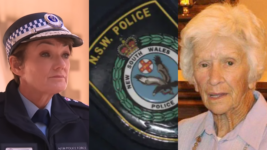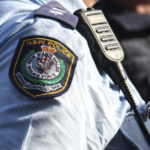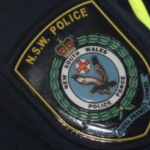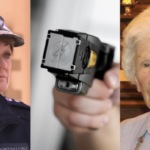NSW Police Force is Brutalising Citizens Without Sufficient Records, Let Alone Accountability

The recent lethal tasering of 95-year-old great-grandmother Clare Nowland, who was holding a steak knife and suffering dementia, has again brought into stark relief the use of excessive force by NSW police: an issue that despite its prevalence, tends to gradually subside until the next incident.
With this incident, however, there wasn’t time to sweep the issue under the carpet, prior to some NSW police officers shooting Steven Pampalian, a North Willoughby man, who was standing on a suburban street holding two chef knives on 25 May: the day after Nowland passed away in hospital.
Whilst it was uncertain if Pampalian was having a mental health incident when he was shot four times, this year’s inquest into the 2019 shooting death of Todd McKenzie has shown it was clear officers were aware he was having a schizophrenic episode alone in his home when they shot him.
The excessive use of force by police is by no means limited to lethal incidents, however. And there are numerous examples, including an eyewitness account of officers kettling a group of protesters into a corner before dousing them with capsicum spray after a Black Lives Matter rally in June 2020.
Yet, a Law Enforcement Conduct Commission report released earlier this year, reveals that the NSW Police Force is not adequately tracking its use of force, which, if it had been, may have prevented an officer considering that tasering an elderly woman using a walking frame as appropriate.
Use of force powers
The Law Enforcement (Powers and Responsibilities) Act 2002 (NSW), commonly known as the LEPRA, is the piece of legislation that contains state law enforcement policing powers. Part 18 of the LEPRA governs the use of force.
Section 230 of the LEPRA empowers NSW police officers to “use such force as is reasonably necessary in exercising a function contained in the legislation” in general. A function is defined as a “power, authority or duty”.
The is followed by provisions guiding use of force during an arrest. Under section 231, it provides that when taking an individual into custody an “officer or other person who exercises a power to arrest” may “use such force as is reasonably necessary to make the arrest or to prevent” an escape.
In the February-released LECC report, reference is made to the Use of Force chapter in the NSW Police Handbook 2018, which is not readily available online. However, the 2014 version of the handbook has been posted, and it includes a use of force section.
“To avoid excessive application of force and maintain an effective incident response, you should use the minimum amount of force that is appropriate for the safe and effective performance of your duties and proportionate to the risks you face,” the 2014 manual advises officers.
The document then goes on to inform them that they’re required to outline instances where use of force has been applied within the NSWPF Computerised Operational Policing System (COPS) database, with details of the specific types of force that were deployed.
So, when resistance on the part of a person of interest is recorded in COPS, this triggers a page that requires officers to tick categories of use of force used in response, which includes tasers and OC (capsicum) spray use, defensive kicks or punches and how many officers were present at an incident.
The data collected from this page of incident reports can then be used as an indication of how force is being applied in the field.
Widespread inconsistences
The LECC is the sole oversight body in NSW that deals with police conduct issues. In its report on NSW police reporting on use of force, the watchdog details its review of 210 use of force incidents, which were identified via complaints and recorded on COPS over the 12 months to May 2021.
The report outlines that the NSWPF informed the LECC in September 2020 that it has “‘a range of structured quality assurance and supervisory oversight processes” in operation, which “provide the opportunity to identify and address any training needs in relation to use of force”.
However, the police watchdog found “widespread inconsistencies” were present in the system, which is supposed to be capturing any patterns in the misuse of force, and the analysis also uncovered instances of underreporting when it comes to use of force.
Established in 1993, the Australia New Zealand Policing Advisory Agency (ANZPAA) is an organisation comprised of the current police commissioners of each jurisdiction within these two countries. And it has established a set of Use of Force Principles.
The LECC report points out that the ANZPAA principles include the requirement that police organisations “maintain governance structures to report, record, monitor and evaluate the use of force to improve public and police safety”.
Yet, while the COPS reporting system requires supervisors to verify that force incidents have been detailed correctly, this is not preventing inaccuracies, which means that any training strategies resulting from these reported statistics are being developed based on dodgy data.
And this lack of consistency also hampers any ability that senior officers have to identify officers who have a problematic track record of use of force before they get too out of hand.
Habitual underreporting
In terms of its findings, the commission found that 73 percent of 210 cases analysed contained at least one inaccuracy. And further the use of handcuffs is not a reporting category, which the LECC considers it should be, and if this is factored in, it translates to a 93 percent inaccuracy rate.
So, of 144 incidents using handcuffs no use of force record was made. But in terms of arm restraints and wristlocks, whilst the report narratives of 90 events mention use of these tactics, only 44 percent of them were recorded in the section of the report used to monitor use of force.
And similar discrepancies were found in regard to other types of force. OC spray use was reported on 22 percent of occasions. Taser use was detailed only 25 percent of the time. The number of officers present was noted in 29 percent of cases and only 50 percent of dog use was detailed.
The LECC considers the underreporting and inaccuracies involved in the limited instances where a firearm was used to be the most significant issue it identified, and it recommends further investigation into firearm use reporting.
Of eight incidents involving firearms, only six recorded their use, whilst a further two incidents recorded firearm on the use of force documentation page, when the narratives of these two events failed to mention any use of guns.
Review, respond, repeat
In response to the LECC review, the NSWPF last September acknowledged “the inconsistencies in police use of force” in the cases the watchdog identified. And the organisation further said it would commit to developing “new policy, guidelines and training on” recording use of force.
“The NSWPF also developed a Use of Force Manual in response to our review,” the LECC further explains. “While this document is primarily about the use of force, it also contains some instructions on recording a use of force.”
This new manual, however, failed to have any impact on the decision of NSW police senior constable Kristen White, who, on responding to a call to deal with Nowland holding a knife in a nursing home, tasered the elderly woman twice for good measure, once in the chest and again in the back.
And whilst its promising that the NSWPF has committed to cleaning up its use of force, this commitment does come over a decade after multiple officers tasered Brazilian tourist Roberto Curti 14 times in Sydney in 2012, which caused his instant death, all because he stole a packet of biscuits.
But as with many problematic government agencies that are consistently called out on the same recurring issues, the NSW police production of a new manual is likely to be more about appearing to reform the system, whilst permitting officers to continue on with their regular excessive behaviour.







